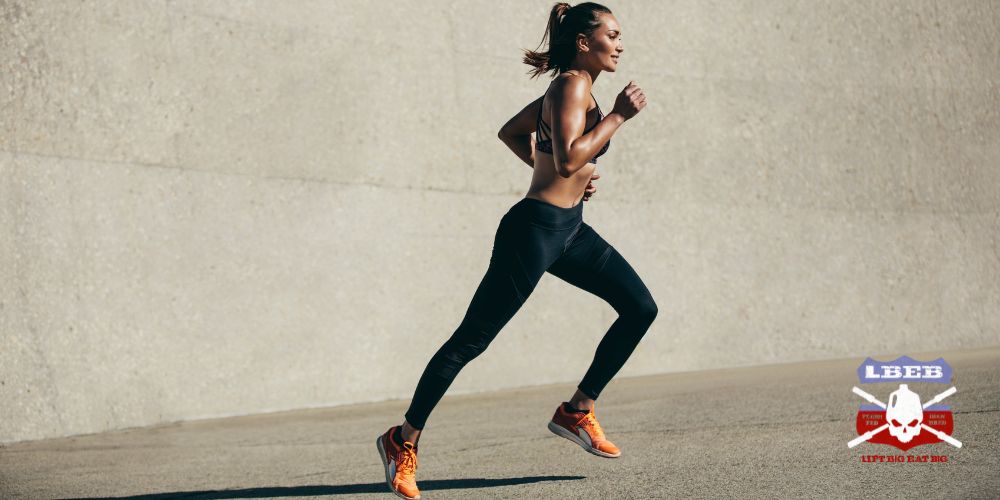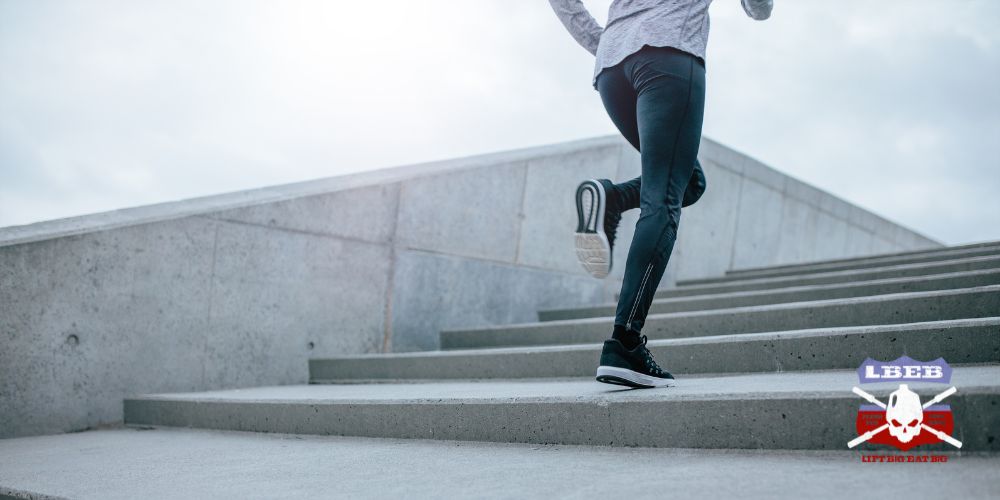Many people may believe running builds muscle, especially in the lower body. I mean, running is driven by the legs! So, it would make sense the muscles used when running would grow from all the work they get through. But is this the case?
Running does not build muscle as it does not satisfy the central tenants of muscle growth. That is mechanical tension and metabolic stress.
But what does this mean? Why doesn’t running build muscle, and is there a way to get huge while running?
Table of Contents
3 Reasons Running Doesn’t Build Muscle
The entire first page of Google is lying to you. You will not build significant muscle mass by running. Here are the reasons why.
Activates The AMPK Molecular Pathway
Without getting too deep into molecular biology and training adaptations, the AMPK pathway, in layman’s terms, is the molecular pathway activated during and after endurance training resulting in improved cardiovascular fitness [1].
The pathway we want to activate to build muscle is the mTOR pathway which, in layman’s terms, is the muscle-building pathway. Unfortunately, stimulating the AMPK pathway and other molecular processes with endurance exercise inhibits the signaling of the mTOR pathway [1][2].
This lasts up to 3 hours before returning to baseline, and the strength of the signal to the endurance pathway depends on the endurance exercise’s volume and intensity. That means the longer the duration and the higher the intensity, the greater activation of AMPK.
Little Mechanical Tension

While the molecular pathways are important for signaling new muscle building, the muscles themselves need to undergo tension through stretch. The combination of tension and stretch maximizes muscle growth [3].
That means muscles must undergo environments of high force production (heavy loading or effort) with full ranges of motion to maximize the muscle-building response. Running satisfies none of these parameters as muscles are not taken through more than a quarter of their potential range of motion. The forces generated aren’t near high enough to stimulate muscle growth.
Little Metabolic Stress
Mechanical tension is widely considered the primary driver of stimulating muscle growth. However, it’s not the only mechanism that will turn you into a lean muscular machine. Metabolic stress is the build-up of by-products trapped in the muscle during anaerobic metabolism, which has been shown to directly stimulate mTOR [4].
Think about those last grueling few reps of a set of bicep curls that have your biceps feeling like they will burst out of your skin. Running doesn’t accumulate metabolites within the working muscles as the exercise is primarily aerobic.
For metabolites to build up locally, exercise needs to be anaerobic, like performing a typical bodybuilding style set and rep protocol of 3 x 8-12. Therefore, running doesn’t satisfy the two main determinants of muscle growth and doesn’t build muscle.
Further, from an anecdotal standpoint, look at the physiques of most endurance runners. Do they possess a physique you’d consider muscular? The above points explain why they don’t.
How To Build Muscle While Running

All is not lost! I’m going to teach you how to build muscle while still enjoying the activity of running with these three powerful tips.
Lift Weights
If you want to build muscle, you must lift weights. It’s a non-negotiable. That doesn’t mean you must take that gym membership you’ve been putting off. Bodyweight exercise is a great place to start. But eventually, to build any appreciable mass, hitting the gym is essential.
Free weights or machines, it doesn’t matter. The goal is to maximize tension on a muscle group throughout a full range of motion. That means squatting deep, having the bar touch your chest on the bench press, and controlling the lowering phase until your arms are straight during a pull-up.
Run Less
This may not be what you want to hear, but if your goal is to build muscle, you’ll need to dial back your running volume. It doesn’t mean you need to stop running. You just can’t run 5 times per week and expect to have the energy to hit the gym hard.
But if you’re running twice a week, you have plenty of energy to train with the necessary volume to add muscle mass.
Eat A Lot
Lifting weights is the facilitator of growing muscle. But you need to fuel adequately to build new muscle tissue. Building muscle is near impossible if you’re not in a caloric surplus. Your body needs energy to create muscle.
An easy way to estimate your caloric intake to build muscle is to take your bodyweight in pounds and multiply by 16-17. This will give a range to be in a slight caloric surplus.
Next is to ensure you’re eating enough protein. 0.8 – 1 g per pound of bodyweight is an excellent place to be to maximize muscle growth. You can divide your carbohydrates and fats as you please. Still, I recommend setting your fat to 25% of your total calories and the rest from carbohydrates.
High carbohydrates will ensure you have ample energy to smash your lifting and running sessions.
Summary
Contrary to what you’ll read in prominent magazine publications, running does not build muscle. If you want to get jacked, you’ll need to reduce your total running volume so you can prioritize hitting the weights.
References
1. Methenitis, S. (2018). A brief review on concurrent training: from laboratory to the field. Sports, 6(4), 127.
2. Baar, K. (2014). Using molecular biology to maximize concurrent training. Sports Medicine, 44(2), 117-125.
3. Schoenfeld, B. J. (2010). The mechanisms of muscle hypertrophy and their application to resistance training. The Journal of Strength & Conditioning Research, 24(10), 2857-2872.
4. Schoenfeld, B. J. (2013). Potential mechanisms for a role of metabolic stress in hypertrophic adaptations to resistance training. Sports medicine, 43(3), 179-194.
